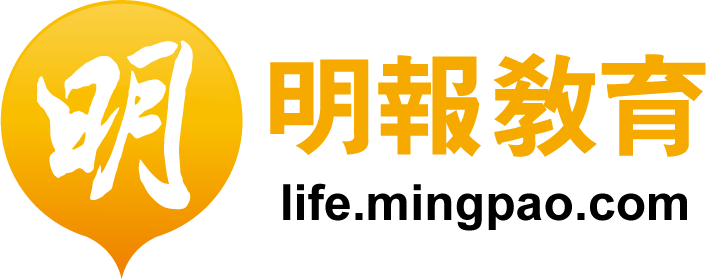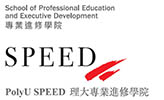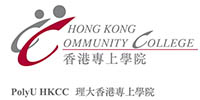雙語社評齊齊聽
[英語 (足本收聽)] Presented by Dr CHEUNG, Eric Lok-ming, Lecturer of Hong Kong Community College, The Hong Kong Polytechnic University
[普通話 (足本收聽)] Presented by Ms QIU, Tina Wei, Lecturer of Hong Kong Community College, The Hong Kong Polytechnic University
The government has held the first community dialogue. Though it put the huge trust gap between the government and the public on full display, the participants did at least show mutual respect and were able to speak their minds freely without constraint, many of whom lashed out at the government and the police force. The dialogue also saw Chief executive Carrie Lam's admission that there was a "disconnect" between herself and the public and that her policies were out of touch with public sentiment.
It was last month when Carrie Lam proposed the idea of meeting with the community. Following a month's preparations, the first community dialogue took place at Wan Chai's Queen Elizabeth Stadium last night. When building the platform for dialogue, the government drew inspiration from the three-month "national debate" by French President Emmanuel Macron to address the "Yellow Vest" movement. Lam stressed that the dialogue was "aimed at change", expressing the wish that she could engage in frank dialogue with citizens.
It is easy to destroy trust but very hard to rebuild it. The amendment storm has caused a breakdown in trust between the government and citizens. The public is still very sceptical about whether the government is willing to listen to public opinion with humility. Some people think that the community dialogue was merely a "public relations exercise". Some were unhappy about the myriad limitations imposed by the protocol of the dialogue on participants. Some were sceptical about whether the participants were truly representative of the public and whether there would be chaos inside and outside the stadium, making it impossible for the event to take place. But the dialogue turned out to run more smoothly than expected. Though hundreds of slogan-chanting citizens were gathered outside the stadium, they did not interfere with the dialogue. Inside the stadium, participants harshly criticised the government but at the same time fully demonstrating their "peace, rationality and non-violence". There were not any vigorous quarrels between people of different views.
Given the social atmosphere in Hong Kong, just one or two dialogue sessions will achieve little when it comes to easing the tension. No sooner had the session ended than a group of protesters occupied the road and engaged in confrontation with the police. It was not until 1.30 a.m. when Carrie Lam finally managed to leave the stadium. But the fact that the first dialogue session itself was conducted without mishap is a good start. It is hoped that more rational dialogue between the government and the public is yet to come and Hong Kong will find a way out.
Though the first dialogue session was boycotted by many of those against the amendments, it was not a political reality show where high-ranking officials could sit in the comfort of an echo chamber. Overall it was marked by open, free airing of views. Most of what the attendees said was quite representative of the views of many members of society. To begin with, many speakers talked about the attacks carried out by men in white at Yuen Long on 21 July and criticised the performance of the police. Sceptical about the scope of authority of the Independent Police Complaints Council, they demanded the establishment of an independent committee of inquiry. Some speakers mentioned the controversy over the disqualification of some people from LegCo elections in recent years and their worry about the future of "One country, two systems". As for Carrie Lam, she did take herself down a peg or two by admitting the "disconnect" between herself and the public, that she was out of touch with public sentiment and that she had not listened enough, giving the impression of being obstinate.
Violence does not solve any problems. Dialogue is always better than resorting to the use of brute force. If one looks at similar matters globally, one will remember that the issue of Northern Ireland, complicated as it was, was resolved through dialogue and a pathway to peace was ultimately found. There is no reason why Hong Kong should give up the use of dialogue to sort out differences.
官民對話踏首步 縮窄鴻溝須行動
政府舉行首場社區對話,突顯了官民之間的信任鴻溝,然而總算做到互相尊重、暢所欲言,不少發言市民嚴厲批判政府和警方表現,行政長官林鄭月娥亦承認與民「disconnect」,施政有離地之處。
上月林鄭提出落區跟市民對話,經過一個月籌備,首場社區對話昨晚在灣仔伊利沙伯體育館舉行。港府搭建對話平台,參考了法國總統馬克龍發起3個月「全國大辯論」應對「黃背心」運動的經驗,林鄭強調對話是「為了改變」,希望可以與市民坦誠對談。
信任破壞容易建立難,修例風波令官民關係破裂,外界對政府官員落區會否虛心聆聽民意,仍有很多懷疑。有人認為社區對話不過是「公關秀」,有人不滿場地約章對參與者諸多限制,也有人質疑出席者是否有足夠代表性,懷疑場外場內可能出現混亂,導致對話無法舉行,然而實際情况算是來得比預期順利。會場外雖有百計市民聚集叫口號,惟並沒有干擾對話進行;會場內,與會市民在嚴辭批判政府之餘,也盡展港人「和理非」一面,未見有人因為意見不合而激烈爭執。
以當前香港社會氛圍,區區一兩場對話,對緩和緊張局勢作用相當有限,對話結束後,一批示威者便佔據馬路,與警方對峙,林鄭遲遲要到凌晨1時30分才能離開。不過首場對話能夠順利舉行,已是一個好開始,但願日後官民能夠有更多和平理性對話,為香港尋找出路。
雖然不少反修例人士杯葛對話,然而首場對話並非一場可以讓高官圍爐取暖的政治秀。整場社區對話算是做到大鳴大放暢所欲言,不少市民發言內容都頗有代表性,反映了社會很多人的心聲。例如不少發言者都談到7.21元朗白衣人襲擊事件,批評警方表現,懷疑監警會職能,要求政府成立獨立調查委員會,亦有發言者提到過去數年的「DQ」(取消參選資格)風波,以及對「一國兩制」前景的擔心等,至於林鄭亦有放軟身段,承認有「disconnect」和「離地」情况、聆聽不夠多,予人一意孤行的感覺。
暴力不能解決問題,對話溝通永遠比訴諸武力可取。放眼世界,複雜如北愛爾蘭問題,各方最終仍能透過對話,找到和平出路,香港沒理由放棄以對話解決分歧。
明報社評2019.09.27






